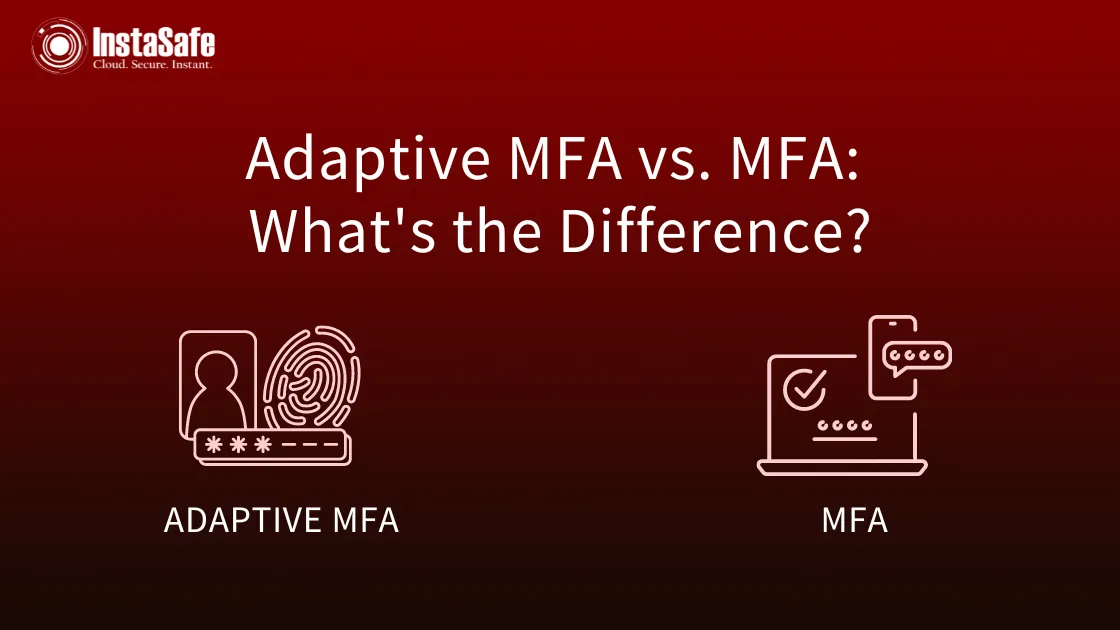Adaptive MFA vs. MFA: What's the Difference?

Nowadays, attackers can easily compromise usernames and passwords through brute force attacks and social engineering methods, resulting in data breaches.
An example highlighting the vulnerability of single-factor authentication was the Colonial Pipeline attack in late 2021. Despite the complexity of the hacked password, relying solely on a single authentication method proved to be a weak security measure.
Two technologies emerged to address these security challenges in access management: Multi-Factor Authentication and Adaptive Authentication. Let's find out the difference between MFA and Adaptive MFA.
What is MFA?
MFA, short for Multi-factor Authentication, is a security measure that adds multiple layers of protection, typically more than two, to enhance security.
Users are required to provide two or more authentication factors that are unique to them to pass through this level of security. These factors can include:
- Something the user knows (knowledge factor):
This factor involves the user's information, such as passwords, PIN codes, usernames, and security questions only the user should know.
- Something the user owns (possession factor):
This factor pertains to the user's physical possessions, such as a phone or laptop.
- Something that the user is (inherence factor):
This factor relates to a physical characteristic or attribute specific to the user, such as fingerprints or iris scans.
What is Adaptive MFA?
Adaptive Multi-Factor Authentication is an approach that uses contextual information and predefined rules to determine which authentication factors should be applied to a particular user in a specific situation.
Adaptive Authentication helps businesses balance their security requirements with the user experience. It is often used in conjunction with Multi-Factor Authentication (MFA) and Single Sign-On solutions.
Adaptive Authentication solutions can dynamically adjust the authentication methods based on various contextual factors, including:
- User account
- Consecutive login failures
- Geo-location (physical location)
- Geo-velocity (distance between consecutive login attempts)
- Device type
- Attempted action
- Day of the week
- Third-party threat intelligence data
- Operating system
- Time of day
- User role
- Source IP address
MFA vs Adaptive Authentication: What's the Difference?
Think of Adaptive Authentication as an advanced version of MFA.
While MFA follows predetermined procedures for everyone and every situation, Adaptive Authentication intelligently tackles challenges based on a predetermined risk model. This allows organisations to apply the appropriate level of gateway security for each login request.
An Adaptive Authentication system is specifically designed to assess the risk associated with a user's login and post-login activities to determine the level of risk posed to the business.
Based on this assessment, appropriate levels of authentication are triggered to protect the organisation's data, websites, portals, browsers, and applications.
4 Ways in Which Adaptive MFA Overcomes MFA
Enhanced Security through Contextual Data
Adaptive Multi-Factor Authentication leverages contextual data during the authentication process to enhance security.
Unlike traditional MFA, which evaluates risk only during authentication, Adaptive MFA continuously evaluates risk factors while accessing information to determine whether to allow a user request.
An algorithm, based on a predefined set of rules, can continuously calculate a risk score. This score is determined by analysing the behaviour of each user.
Factors such as location, timing of the resource request, and keystroke dynamics may be considered during the risk evaluation process. Based on the evaluated risk score, the appropriate level of authentication required can be determined.
Improved Productivity via Context-Aware Authentication
Demanding repeated Multi-Factor Authentication from users can be time-consuming and frustrating and may impact productivity.
Adaptive Authentication addresses this by responding to user and device context. It reduces authentication requirements in low-risk situations and streamlines the process.
Adaptive authentication can accept a login without needing a second factor by considering external factors such as user behaviour patterns, location, and time.
For example, suppose a user attempts to log in using a mobile banking application. In that case, the system may intelligently decide not to send an OTP to the same device, considering the practicality and security implications.
Better Flexibility to Meet Corporate and User Needs
Unlike traditional MFA, Adaptive Authentication offers flexibility by applying different methods based on unique use cases.
It considers security strength, IT benefits, user benefits, and cost to determine the most suitable authentication method for a specific user, task, geo-location, and time.
Examples include authenticating in certain geo-locations via a network showing suspicious activity or performing high-profile online transactions.
Adaptive MFA can elevate the level of authentication by prompting additional factors, such as OTP MFA, in high-risk situations.
Balancing Security and User Experience
Adaptive MFA addresses the imbalance between security and user experience by introducing an additional layer of security only when the risk evaluation indicates a high-risk scenario.
In low-risk activities, users are not required to enter a second factor, reducing friction and improving the user experience.
Adaptive Authentication allows adding new functions and fields to a script based on specific requirements. Once implemented, the script can be integrated into the service provider's authentication step configuration.
These scripts can be designed to follow evaluation criteria such as user attributes, user behaviour, risk analysis statistics, and machine learning algorithms.
Final Words
As mentioned earlier, Adaptive Authentication offers a smoother user experience compared to traditional MFA with dynamic contextual threat analysis and applying precise levels of security.
InstaSafe Adaptive Authentication can address the limitations of traditional MFA solutions and provide an additional layer of security for systems.
It may become essential for businesses to incorporate adaptive authentication into their security solutions, given the increasing sophistication of cyber attacks.And so, organisations prioritising their security posture will need more intelligent solutions than legacy MFA solutions.
Key Products
Multi Factor Authentication | Identity And Access Management | ZTNA | Zero Trust Application Access | Secure Enterprise Browser
Key Features
Single Sign On | Endpoint Security | Device Binding | Domain Joining | Always On VPN | Contextual Access | Clientless Remote Access | Device Posture Check
Key Solutions
VPN Alternatives | DevOps Security | Cloud Application Security | Secure Remote Access | VoIP Security
